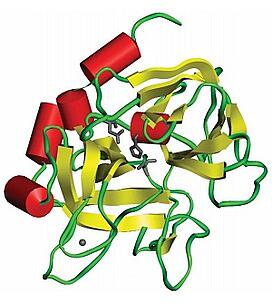Question:
What are the applications of protein cross linkers?
The Protein Man Says:
As mentioned in our previous post, protein cross-linking agents can be used in a wide variety of applications. They are especially useful in studying protein structures, functions and interactions and in preparing antibodies and immunotoxins. Let us now continue where we left off by taking a closer look at the remaining four top applications for protein cross-linkers.

Cell membrane and cell surface studies
Water-soluble imidoester cross-linkers are useful for studying the structure and functions of cell membranes since they are capable of establishing the location of molecules on the outer layer of the membrane while sulfhydryl reactive cross-linkers are useful for targeting molecules with cysteine.
Membrane impermeable sulfo-NHS-ester cross-linkers, on the other hand, are ideal for identifying the various receptors on the surface of the cellular membrane since they only react with the molecules found on the surface of the cell.
Solid-phase immobilization
Cross-linking agents can be used to attach or immobilize proteins onto a solid support (nitrocellulose membrane, polystyrene, polyacrylamide resin, glass and/or agarose) for protein analysis or affinity purification.
Protein-protein conjugation
Cross-linkers are widely used in the preparation of protein-protein conjugates such as alkaline phosphatase and peroxidase and secondary antibodies which are commonly used in ELISA, Western blotting and other immunodetection methods.
Protein to DNA/RNA cross-linking
Cross-linking of DNA or RNA to proteins is quite limited due to the lack of reactive groups in DNA and RNA probes. To address this limitation, DNA/RNA probes are synthesized with amine or thiol groups attached to specific bases which then serve as target reactive sites for cross-linking. Heterobifunctional cross-linkers are considered the best choice for most protein-protein conjugation since they do not pose the risk of self-conjugation.
Reactive group transfer
Cross-linkers also come in quite handy when you are planning to modify target groups and/or to add space for subsequent coupling reactions.
What do you primarily use protein cross-linkers for?






